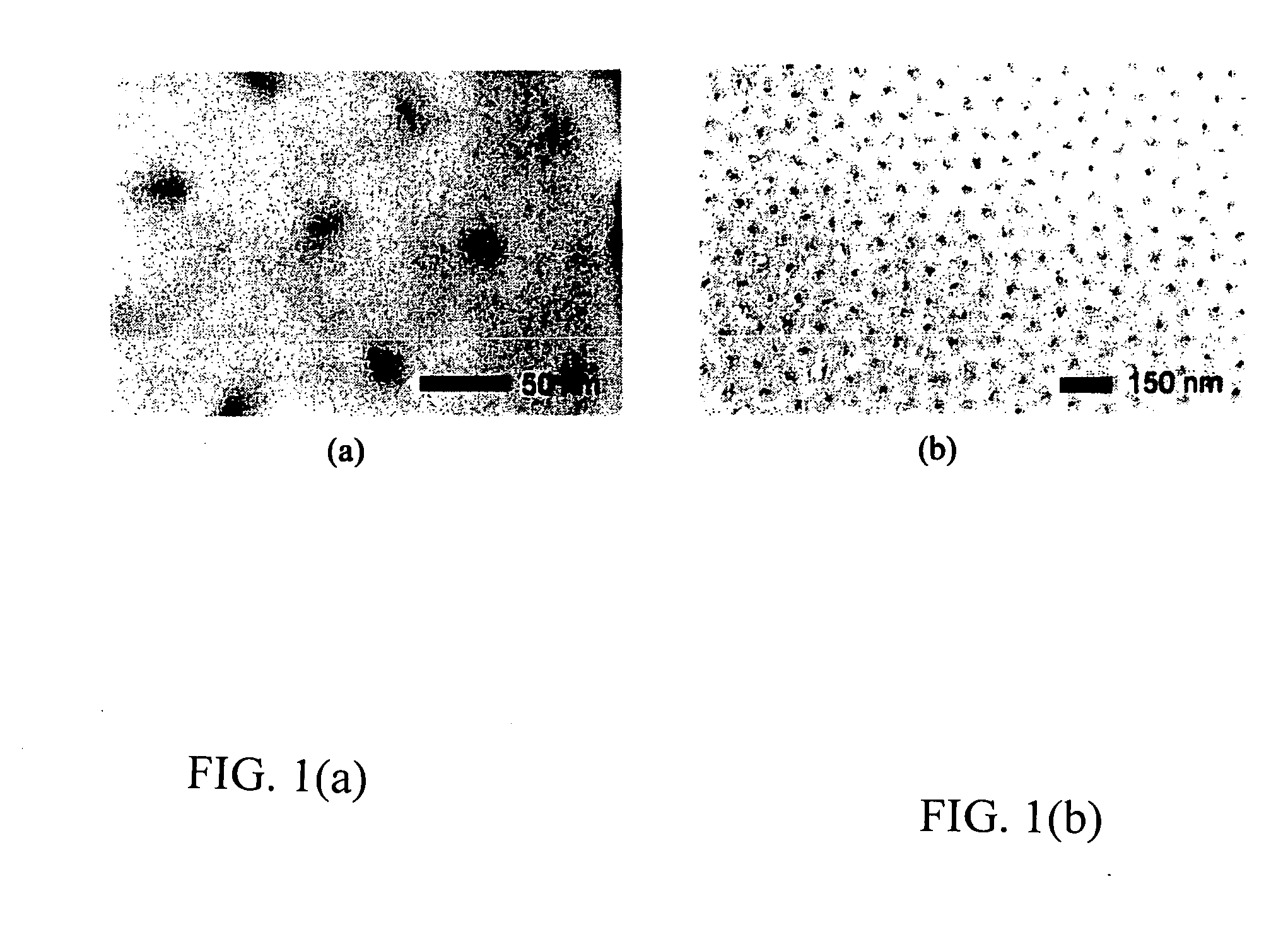Porous anodic aluminum oxide membranes for nanofarication
an aluminum oxide membrane and anode technology, applied in the direction of physical/chemical process catalysts, liquid/solution decomposition chemical coatings, electrochemical variables of materials, etc., can solve the problems of long response time of commercial hydrogen sensors, high cost, and inability to find suitable carriers, etc., to achieve high useful
- Summary
- Abstract
- Description
- Claims
- Application Information
AI Technical Summary
Benefits of technology
Problems solved by technology
Method used
Image
Examples
Embodiment Construction
[0023] AAO nanowells were prepared from high purity aluminum sheets (99.998%, Alfa Aesar) through anodization in an aqueous solution of 0.3 M oxalic acid. Typically, a cleaned aluminum sheet was electro-polished and first anodized in oxalic acid solution for several hours. After removing the initial oxide layer, the second anodization was processed for a short period of time between 0 and 8 min (0 min means no second anodization).
[0024] Pd nanostructures were coated on AAO nanowell substrate by following the method reported in M. Stinhart, et al., Adv. Mater. 15, 706, (2003), incorporated herein by reference. Briefly, Pd(OAc)2 (0.125 g) and Poly(DL-lactide) (PDLLA, 0.125 g) was first dissolved in 10 mL chloroform to give a red solution. The solution was then used to wet the nanowell surface (0.400 mL over AAO nanowell substrate with a size about 1 cm2). The coated samples were then placed in an oven and heated at 200° C. for 8-14 hours. The palladium coated top surface of AAO nanow...
PUM
| Property | Measurement | Unit |
|---|---|---|
| pore diameters | aaaaa | aaaaa |
| thickness | aaaaa | aaaaa |
| pore diameter | aaaaa | aaaaa |
Abstract
Description
Claims
Application Information
 Login to View More
Login to View More - R&D
- Intellectual Property
- Life Sciences
- Materials
- Tech Scout
- Unparalleled Data Quality
- Higher Quality Content
- 60% Fewer Hallucinations
Browse by: Latest US Patents, China's latest patents, Technical Efficacy Thesaurus, Application Domain, Technology Topic, Popular Technical Reports.
© 2025 PatSnap. All rights reserved.Legal|Privacy policy|Modern Slavery Act Transparency Statement|Sitemap|About US| Contact US: help@patsnap.com



